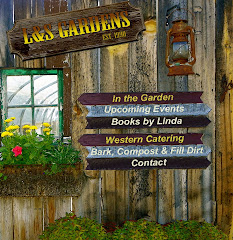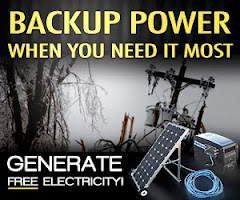Getting Prepared for an
Electromagnetic Pulse Attack by Jerry Emanuelson
The science fiction writer Arthur C. Clarke once said: Any sufficiently advanced technology is indistinguishable from magic. This statement is commonly known as Clarke's Third Law. Many people have heard this quotation, but few people really think about its implications. We now live in a world that is so completely immersed in advanced technology that we depend upon it for our very survival. Most of the actions that we depend upon for our everyday activities -- from flipping a switch to make the lights come on to obtaining all of our food supplies at a nearby supermarket -- are things that any individual from a century ago would consider magic. Very few people in industrialized countries do work that is not directly assisted by electronic computers, although that computerized assistance is often quite invisible to the average person. Few people think about things such as the fact that whenever we buy some food item at a supermarket (and many others are buying the same item), the next time we go to that same supermarket, they still have about the same supplies that they had before. There are invisible infrastructures all around us that are made up of advanced technology. Most of us just take the magic for granted. Few people stop to consider what would happen if, in an instant, the magic went away. If our advanced technology were suddenly and completely destroyed, how would we manage to survive. A nuclear EMP could make the magic go away. I hope it never happens, and I don't think that it is at all inevitable. It makes no sense, however, to be blind to the danger. It is both much less likely to happen -- and also less likely to have a catastrophic impact -- if, both as a civilization and as individuals, we are prepared for an attack on our advanced technology. A nuclear EMP would be a seemingly magical attack upon our advanced technology, the technological infrastructure upon which our lives depend. This is a page about some of the things that individuals can do to prepare for an electromagnetic pulse attack. I'm an electronics engineer who has been thinking about the EMP problem for about 3 decades. I even have an ancient Radio Shack TRS-80 Model 4 that is completely electromagnetically shielded. It's just a personal antique, useless for anything but a personal reminder of how long I've been thinking about this problem. That early-model personal computer didn't even have a hard drive. I've spent much of my career working with radio and television transmitters on high mountaintops where there is a lot of lightning and other kinds of electromagnetic transients. I understand how fragile our advanced technological infrastructure can be. On this page, I'm going to concentrate on a nuclear EMP attack, but much of this also applies to natural events such as unusual geomagnetic storms due to extremely large solar flares. First: A brief note about solar flares (and similar natural events), and then I'll get back to nuclear EMP. Solar flares would primarily affect the power grid, and are not likely to harm things like computers. Also, solar flares would only disrupt communications temporarily, and would not be likely to cause direct harm to communications equipment. A extremely large solar flare, though, could destroy a substantial fraction of the large transformers on the power grid. If this happened, electric power might be out for months or years. The last solar flare that could have caused this level of damage happened in 1859, before the power grid was in place. The power grid has only been in place for a tiny fraction of one percent of human history, and a really large solar flare has not happened in that time. There is a general assumption that any solar event that is similar to, or larger than, the 1859 solar flare will simply never happen again, although there is no justification for such an assumption. There is a good possibility that such a solar flare will happen in this century. If it happens in the current situation without spares for our large transformers, a large part of the power grid will be down for at least a year. What just happened??? The most important piece of information you can have after any sort of unusual electrical event is information about what happened. If there is a bright flash in the sky at the same time that the power goes off, and you've been thinking about nuclear EMP, your first reaction may be to assume the worst -- but it is probably just a cloud-to-cloud lightning that happened at the same time that a distant cloud-to-ground lightning strike knocked out the power. Even if you thought the sky was clear outside, there may have been a distant thunderstorm, and lightning bolts sometimes travel remarkably long distances. If it is a nuclear EMP, though, you will want to know about it right away, and the local radio and television stations are going to all be off the air. The internet will also be down. There might be some telephone service if you are very lucky, but anyone that you would call probably won't know any more than you. The only way that you will get any timely information will be by listening to broadcasts originating on other continents using a battery-operated shortwave radio. If you have a shortwave radio, it is likely to be knocked out by the EMP unless it is adequately shielded. To be adequately shielded, it needs to be kept inside of a faraday cage, and preferably inside nested faraday cages. A faraday cage is an total enclosure made out of a good electrical conductor such as copper or aluminum. Large faraday cages can get rather complicated. For small portable electronics, though, completely covering the electronic equipment in aluminum foil makes a faraday cage around the equipment. The foil covering needs to be complete, without any gaps. A single layer of foil may not be adequate. In order to enclose the equipment in a nested faraday cage, place the foil-covered device in a plastic bag, such as a freezer bag, and wrap that bag completely in aluminum foil. If you really want to protect the equipment against a large EMP, add another layer of plastic and foil. Just adding layers of foil directly on top of foil won't do much good, due to what is called "skin effect." I won't bother to explain skin effect here, but you can look it up if you're curious. Of course, any antennas or power cords need to be either disconnected or contained completely within the faraday cage. You'll need to keep plenty of batteries on hand for the radio. There are some models of shortwave radios that have hand-crank or solar power, but those "emergency radios" that I've tried don't have very good shortwave reception. The idea behind having a shortwave radio is to be able to directly receive radio stations on another continent that has been unaffected by the EMP. The radio that I like best of the portable, and not too expensive, receivers is the SONY ICF-SW7600GR. This model is not cheap, but you can usually find it for at least 25 percent below its "list price." Many people have bought or kept old vacuum tube radios for use after an EMP attack. Although vacuum tubes are thousands of times more resistant to EMP than transistors (and discrete transistors are more resistant than integrated circuits), other components of vacuum tubes radios can be damaged by EMP. In fact, vacuum tube radios actually were damaged in 1962 high-altitude nuclear tests by both the United States and the Soviet Union. Vacuum tube radios also have the disadvantage of requiring much more power than solid-state radios, and electric power will be a rare commodity after a nuclear EMP. Although a vacuum tube radio would have a high likelihood of coming through an EMP event undamaged as long as it was turned off and not connected to an antenna, a modern solid-state shortwave radio kept inside of a nested faraday cage is the best form of insurance for obtaining information after an EMP event. A nuclear EMP will severely disrupt the upper atmosphere, so it could be several hours after an EMP before you get decent shortwave reception with any radio, but that will be long before you could get information from any other source. If you're in the United States, you may be able to get emergency information from a local NOAA Weather Radio station. I believe that a few NOAA emergency transmitters are EMP-protected, but most are not. Repairs to many of these transmitters will be able to be made by military personnel, who can also supply emergency power to them for a while, but that emergency power may not last very long. If you're in the United States, though, it is important to have a NOAA Weather Radio. These radios really are inexpensive, and whenever the NOAA transmitters are working, they can provide local information that is critically important. Like your shortwave radio, your NOAA Weather radio needs to be kept in a nested faraday cage until you need it. NOAA Weather Radios could be especially important in the case of a large solar superstorm, where the radios would probably continue to work and give information, even though much of the power grid could be out for years. If you learn that you have been in an EMP attack, don't make any premature assumptions about how bad it may have been. It may have just hit a part of the country, or it may have been with a relatively small weapon so that the power grid may be back up and running in a few weeks. It also could be from a large weapon, or multiple weapons, that totally destroyed the infrastructure of the country. There is an enormous spectrum of possibilities for an EMP attack. If you have a spare laptop computer, it can also be stored in nested faraday cages, just like your radio. A few days after an EMP attack, a lot of people will become really terrified as their food and water supplies run out, and they discover that there is no way to obtain fresh supplies. Within two or three weeks, the military services will likely come to the rescue for many people. If the size of the attack has been very large, though, that period of relief will probably not last very long. Most people will simply begin to starve to death. Whatever the scope of the EMP attack, the longer that you can remain at home and be fairly self-sufficient, the better things will be for you. This is likely to be especially true during the first few weeks after the EMP event. In most industrialized countries, it is not customary for individuals to keep very much in the way of emergency supplies in their homes. In fact, many people who do keep many emergency supplies are regarded with some suspicion, thought to be "survivalists" or some other strange breed of humans. Disasters are frequent enough, though, that any prudent individual should maintain some basic level of self-sufficiency. Most people in industrialized countries see large-scale emergencies happening frequently on television, while maintaining the irrational and completely unwarranted assumption that it will never happen to them. It is the people who do not plan for personal emergencies who ought to be regarded with suspicion as a strange and irrational breed of human. There are several mainstream companies that specialize in these emergency supplies. The MREs (meals ready to eat) used by military services, especially during emergencies, have to be made on an industrial scale, and they are available for sale to individuals during non-emergency times. Many of these same companies make freeze-dried food in cans, which have a far longer shelf life. After any sort of large-scale disaster, these supplies are only going to be available from government agencies, and government agencies will only have a finite supply. Many basic emergency supplies can be purchased from reputable companies that have been around for years. The food that these companies sell normally has a shelf life of 5 to 20 years or more, depending upon exactly how it is prepared and packaged. Although I do not want to get into the process of naming companies, one that I believe to be one of the best, especially for those who have not thought about the subject before, is Emergency Essentials. For any emergency food supplies that you do get, it is important to get food you personally like and are actually likely to use, even if a personal emergency never happens. Then, if an emergency does happen, it will be you, not distant relief workers, who will determine how good your food is. Don't forget about water. Few people keep an emergency supply of water, in spite of the fact that it is inexpensive and easy to do. Almost every country of the world has a period of days every year where many people in some large area are without drinkable water. In most countries, much of the water is pumped by electric motors. After a major EMP attack, electricity for most of those pumps is going to be unavailable for a very long period of time. If you want to really be part of the solution, instead of part of the problem, and increase the probability that your country can return to normal within a few years after an EMP attack, then you can be prepared to become part of the new infrastructure. The more electronics equipment that you can store under nested faraday shielding, the better. If you want to be able to use that electronics equipment after the batteries run down, you will need a personal power source. A simple small electric generator, that does not depend upon electronics to run, is always a good idea. After an EMP attack, though, fuel for the generator will be a scarce commodity. Solar panels can be used to supply a small amount of electricity indefinitely, especially if you also have some good rechargeable batteries that match the voltage of your solar panel. I don't know how resistant solar cells are to EMP (the technology here is ever-changing), but if you have something like a 50 watt solar panel, you can store it in a nested faraday cage. Only very rare individuals are going to be able to have full electric power after an EMP attack, no matter what advance preparations they might like to make. In a post-pulse world, though, any amount of reasonably reliable electricity is going to be a real personal luxury. If you want to store larger items in a faraday cage, you can use copper screen or aluminum screen. Most commercial faraday cages use copper screen, but copper screen is expensive and difficult for most individuals to obtain. Bright aluminum screen works almost as well, and aluminum screen can be obtained in rolls at many building supply stores such as Home Depot. Don't worry about the fact that this screen is not a solid material. The size of the tiny ventilation holes in the mesh of ordinary window screen is irrelevant to EMP protection. Aluminum screen can make a very effective electromagnetic shield. Ordinary ferrous (iron-containing) window screen is not a good material for a faraday cage. It is important to have all of the computer data that is important to you backed up onto optical media, like CD or DVD. Paper printouts are fine, but after an EMP attack, most of the data on paper printouts will simply never get typed back into computers, so those paper printouts will just become your personal mementos. CD and DVD data (in other words, optical media) is not affected by EMP. Even if your computers are destroyed, if your country's economy can get re-built after an EMP attack, then new computers can be purchased from other continents. If all the computer data is gone, then recovery is going to be many years later than it would be if the data could just be reloaded from optical media. Computer data runs our modern world. It is a major part of the invisible magic that I mentioned at the top of this page. Much of what has been written elsewhere about faraday cages is based upon the assumption that the faraday cage is going to be a room or building sized structure. Large faraday cages need to be grounded, but for smaller faraday cages, such as you would use to shield a radio or a laptop computer, any wire running to a ground is likely to just function as an antenna, and possibly as a very efficient antenna for gathering EMP. As the Soviets learned in 1962, even large underground conductors (such as underground power lines) can absorb huge induced currents from nuclear EMP. The same thing can happen to underground conductors like cold water pipes, which are commonly used for grounding. In a nuclear EMP, a cold water pipe ground may become a large underground antenna. For shielding small items like radios and other electronics equipment, use the nested faraday cage system of alternating foil (or screen) and plastic, and don't bother with the ground connection (unless you plan to physically bury your equipment). EMP grounding gets very tricky, and the ordinary rules for grounding do not apply. (Most high-power transmitter antennas are actually at a DC ground.) Protecting most electronic appliances in your house against EMP, if they are plugged in and in use, is probably hopeless. There is always the possibility, though, that you will be near the edge of an area that is affected by an EMP attack. For this possibility, the combination of ordinary surge suppressors and ferrite suppression cores could be very valuable. Ferrite suppression cores are those imbedded cylindrical things that make the cylindrical protrusion in the power cords on sensitive electronics equipment. They can be very effective to protect your equipment against ordinary transients -- such as the type that occur constantly on the power lines and slowly damage your electronics equipment. The ferrite suppressors on power cords (and inside of many surge protectors) are usually the common type 43 ferrite material, which offers a considerable amount of protection against ordinary transients, but would hardly do anything at all to the very fast E1 component of a nuclear EMP. You can buy separate snap-on ferrite suppressors, including snap-on ferrite suppression cores with type 61 ferrite, which will absorb much faster pulses. The ferrite cores with material 61 don't cost all that much more than the older ferrite, and they will attenuate the spike from a nuclear EMP. If you're in an area where there is a strong EMP, it won't attenuate it enough to do any good at all, but if you're at the edge of the affected area, or just get a nearby lightning strike, or have a lot of ordinary voltage spikes on your power line, these snap-on ferrite cores with material 61 could be extremely valuable. They are sold by companies such as Mouser Electronics. Look for items such as Fair-Rite part number 0461167281 or 0461164281. Items like surge suppressors and ferrite suppression cores are only going to be effective against relatively small pulses that come in through the power line. A large EMP will totally and completely fry your large screen television by directly inducing currents in the equipment itself that are far too large for it to handle. The same is true for much of the other electronics in your home. There is no reason to assume, though, that any EMP attack will be maximally effective -- or that you will never be right at the edge of the affected area. Also, even if an EMP attack never happens, an endless barrage of small voltage spikes is eating away at your electronics equipment every day unless you are doing something to protect against it. There are all kinds of EMP attack scenarios. There are many situations one can imagine where the area around the edges of the EMP zone is extremely large. There could be entire large cities where even the unshielded equipment with minimal protection mostly survives, but everything unprotected is fried. I'll have more to say about this subject later. There is actually quite a lot that can be done to protect your electronics from a small EMP attack or if you happen to be at the edge of the EMP-affected area. If you live in a lightning-prone area, many of these things will give your electronics equipment a much longer lifetime. Repeated hits from small electrical transients is a major cause of electronic failures, ranking second only to heat as a cause of most types of electronic failure. It is important to read the EMP Commission Report on Critical National Infrastructures, so you'll have some idea of the scope of the EMP problem. This EMP Commission report is the best information, but definitely not the last word, on likely EMP effects on today's infrastructure and equipment. The EMP Commission relied heavily on data from simulators, and this data does not explain all of the effects that were actually seen in the 1962 nuclear tests, especially in the EMP tests over Kazakhstan. One thing that you'll discover in that Critical National Infrastructures Report is that automobiles and trucks seem to be much more resilient against EMP attacks that what is portrayed in most fiction. Although many vehicles would be rendered inoperative, and it will be a regular "demolition derby" on streets and highways, most (but not all) vehicles that are not running at the time of an EMP will be likely to run just fine when they are started (although you are very likely to experience damage to non-essential functions). Vehicles, especially gasoline vehicles, have to have a certain amount of electromagnetic shielding around the entire ignition system. Otherwise, the ignition noise from all the automobiles would render radio and television sets unusable (especially car radios). The most difficult part of operating a car after an EMP event (or even a solar superstorm) is likely to be obtaining gasoline. It is very foolish to ever let the level of gasoline in your tank get below half full. In a wide range of emergencies, one of the most valuable things to have is a full tank of gasoline. It is important to remember that the last time an automobile was actually tested against nuclear EMP was in 1962. Everything since then has been in simulators that we hope and believe are close to the real thing. In the 1962 Soviet high-altitude nuclear tests over Kazakhstan, even military diesel generators were damaged. This process was apparently started by a large voltage spike from the fast E1 component of the pulse punching through the insulation on the wiring. According to Vladimir M. Loborev, one of the chief scientists who studied this phenomenon, "The matter of this phenomenon is that the electrical puncture occurs at the weak point of a system. Next, the heat puncture is developed at that point, under the action of the power voltage; as a result, the electrical power source is put out of action very often." (From his report at the 1994 EUROEM Conference in Bourdeax, France.)
|
|
























